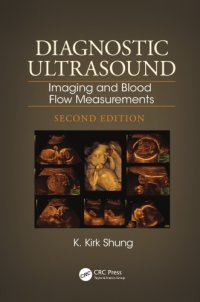
Ebook: Encapsulated microbubbles and echogenic liposomes for contrast ultrasound imaging and targeted drug delivery
Author: Shirshendu Paul Affiliation: Department of Mechanical Engineering University of Delaware Newark DE 19716 USA, Rahul Nahire Affiliation: Department of Pharmaceutical Sciences North Dakota State University Fargo ND 58108 USA, Sanku Mallik Affiliation: Department of Pharmaceutical Sciences North Dakota State University Fargo ND 58108 USA, Kausik Sarkar Affiliation: Department of Mechanical and Aerospace Engineering The George Washington University Washington DC 20052 USA +202-994-2724 +202-994-0238
- Year: 2013
- Language: English
- pdf
Micron- to nanometer-sized ultrasound agents, like encapsulated microbubbles and echogenic liposomes, are being developed for diagnostic imaging and ultrasound mediated drug/gene delivery. This review provides an overview of the current state of the art of the mathematical models of the acoustic behavior of ultrasound contrast microbubbles. We also present a review of the in vitro experimental characterization of �Read more...
Abstract: Micron- to nanometer-sized ultrasound agents, like encapsulated microbubbles and echogenic liposomes, are being developed for diagnostic imaging and ultrasound mediated drug/gene delivery. This review provides an overview of the current state of the art of the mathematical models of the acoustic behavior of ultrasound contrast microbubbles. We also present a review of the in vitro experimental characterization of the acoustic properties of microbubble based contrast agents undertaken in our laboratory. The hierarchical two-pronged approach of modeling contrast agents we developed is demonstrated for a lipid coated (Sonazoid TM ) and a polymer shelled (poly D-L-lactic acid) contrast microbubbles. The acoustic and drug release properties of the newly developed echogenic liposomes are discussed for their use as simultaneous imaging and drug/gene delivery agents. Although echogenicity is conclusively demonstrated in experiments, its physical mechanisms remain uncertain. Addressing questions raised here will accelerate further development and eventual clinical approval of these novel technologies